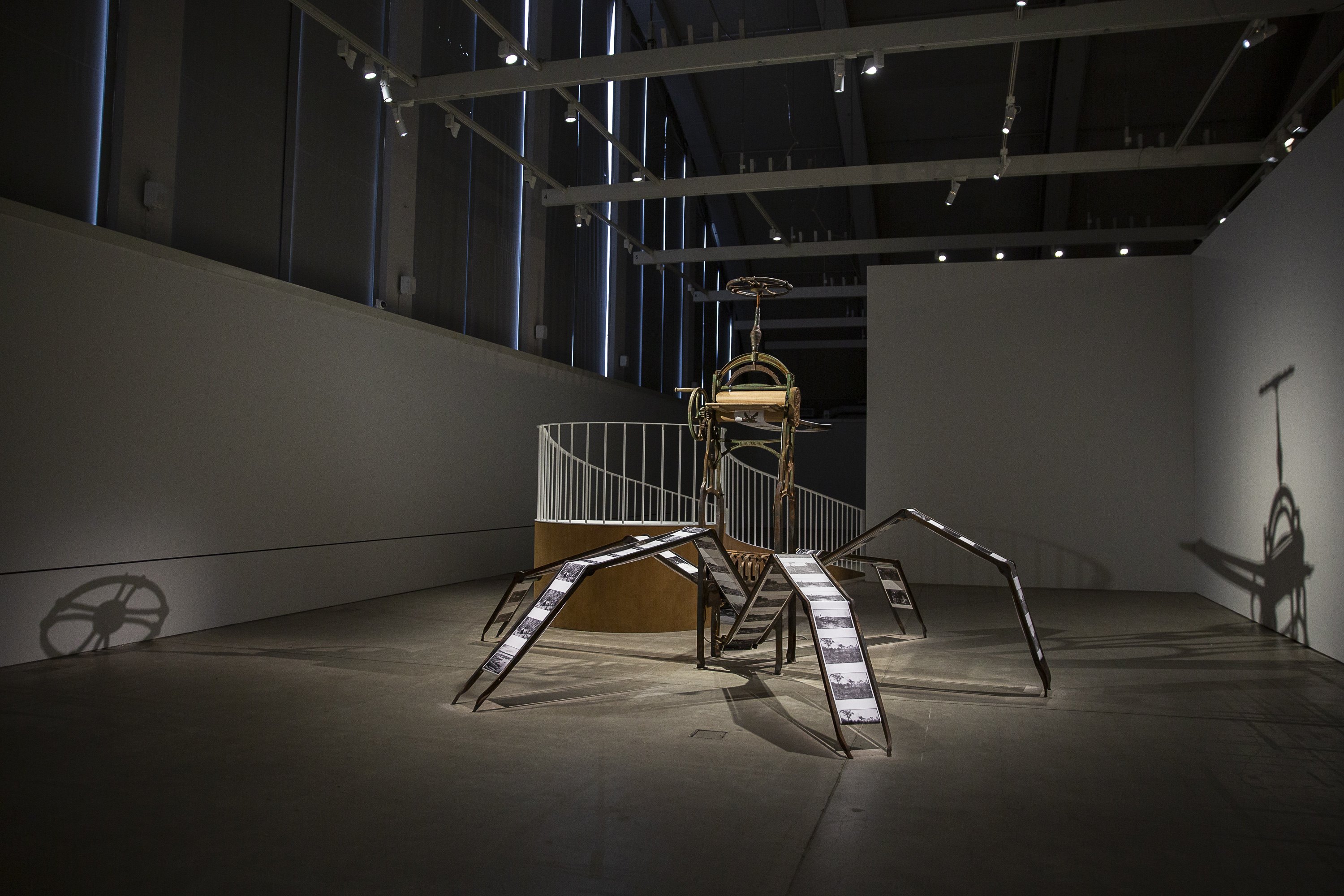Bita Razavi is a multidisciplinary artist known for her autofictional practice centered around observations of everyday situations. While working as a cleaner in Helsinki, Razavi photographed design objects in Finnish homes, observing them as a manifestation of national identity. She married her schoolmate in her studio at the Academy of Fine Arts to address Finnish immigration policies and spent four years renovating two houses in Estonia to study the Soviet renovation practices through years of changing economic and political situations.
Bita Razavi’s work at Helsinki Biennial 2023 consists of a kinetic sculpture Kratt and a sculptural spatial intervention Elevated Platform. The kinetic sculpture evokes a ‘Kratt’, a mythological creature from Estonian folklore.
Made up of household objects, it came to life once three drops of blood had been sacrificed to the devil and performed any task, including wrongdoings, for its owner.
To access Kratt, the spectator has two options, to walk up the Elevated Platform or to remain on the floor level. To reach the top of the platform, one must walk on a floor of fake marble supported by a ramp covered by raw teak veneer. While people on the platform can enjoy Emilie Saal’s botanical drawings printed on the upper belt of the sculpture, the visitors below see the lower belts and the images of destroyed landscapes documenting conditions of colonial extraction of labour and soil in Dutch East Indies.
These images were removed from the exhibition of the Estonian Pavilion, at the 59th Venice Biennale where the work was previously shown, and the finalized sculpture is being exhibited for the first time at the Helsinki Biennial 2023.
Coming from a country where resistance is an inevitable aspect of life, I’ve long been fascinated by creative strategies of resistance. While researching the life story of artist Emilie Rosalie Saal, I came across several resistance movements against the exploitation of local resources in Indonesia. Among them was Samin Movement and weaving protests. Soon it became apparent to me that not telling these stories or not dealing with the dark colonial context of Saal’s success story would be historical erasure. My work deals with erasure, the complex relation between the colonized and the colonizer, and incomplete narratives – whose story is told and who is erased.
Emilie Saal (1871–1954) was born in Tartu, studied art in St. Petersburg, and lived and worked as a botanical painter in Java between 1899 and 1920. Her practice relied on the labour of local Indonesian women working in her household. ‘Kratt’ represents the possibility of a servant for a servant. The spidery sculpture moves its mechanical insides to produce images which emerge from a central printing press. The sculpture references the development of modern printing technology, which made the colonial worldview tangible for a wider audience through botanical images, maps, and information about the colonies. The materials and design of the platform are historical references that emulate the socio-political conditions that enable the privileged European to climb above the indigenous. Teak and marble were both exploited at the expense of the monumental modification of landscape and destruction of nature.
Bita Razavi

Bita Razavi, Kratt: Diabolo. № 3 2022, Elevated Platform 2022 , Helsinki Biennial 12.6.-17.9.2023, Vallisaari, Helsinki, Photo: © HAM/Helsinki Biennial/Sonja Hyytiäinen
Bita Razavi
Kratt: Diabolo. № 3
Elevated Platform
2022
Kratt: Diabolo No3: kinetic sculpture, metal, electric motors, botanical drawings and archival photographs printed on belts, sound of un-oiled machinery
Commissioned by the Estonian Centre for Contemporary Arts Produced by Post Theatre Collective, Tallinn Art Hall.
Elevated Platform: sculptural spatial intervention, wood, metal, teak veneer and marble imitation
Commissioned by the Estonian Centre for Contemporary Arts
Produced by Post Theatre Collective and Estonian Centre for Contemporary Arts